#tooth gem
Explore tagged Tumblr posts
Photo

Rema | All Smiles
#Rema#Smiles#Smiling#Afrobeats#Artist#Art#Fit Check#Outfit#Fashion#Diamonds#Chain#Gold Tooth#Tooth Gem#Snapback#Ring#Diamond Ring#Melanin#Black Excellence#Africa#Nigeria#Naija#african tumblr
319 notes
·
View notes
Text

#tooth gem#teeth gem#smile#grillz#jewelry#fashion photography#sketchonista#paris fashion week#styledujour#street style#hypebaestyle#street fashion#dailystyle#jewellery#streetstyle#jewels#fashion trends#fashiontips#fashion tumblr#styleinspo#style inspiration#style ideas#fashion#fashion editorial#highsnobiety#hypebeast#swagstyle#swagger
14 notes
·
View notes
Text
How Long Do Tooth Gems Last?
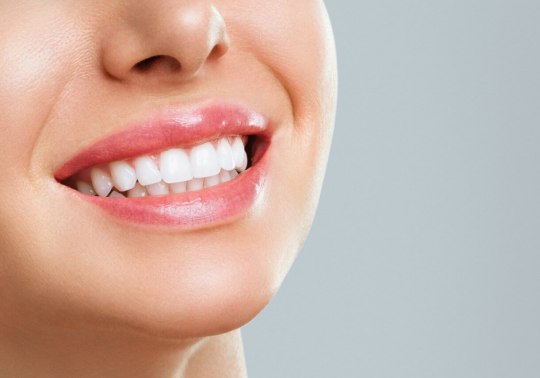
Tooth gems are a popular way to add a personal touch to your smile with a hint of sparkle. These tiny gems, usually crafted from Swarovski crystals, gold, or diamonds, are applied to the surface of your teeth, offering a semi-permanent way to accessorize your look. But how long do tooth gems actually last? This guide will walk you through the longevity of tooth gems, factors that impact their durability, and tips for extending their wear.
Understanding the Longevity of Tooth Gems
Generally, tooth gems can last anywhere from 6 months to a few years, depending on the type of adhesive used, personal dental care habits, and the gem material. Most professional tooth gems are attached with a high-quality dental adhesive, similar to the one used for braces, which ensures durability and safety. Here’s what you can expect in terms of longevity:
Temporary Tooth Gems: These are usually attached with lighter adhesives and last around 6 months to a year.
Semi-Permanent Tooth Gems: Using high-strength adhesives, these gems can last up to 2 years or longer with proper care.
When placed by a professional, tooth gems have a higher chance of staying intact for a longer period. The placement, quality of adhesive, and gem size are all factors that influence how long they stay attached.
Factors That Affect Tooth Gem Durability
Several factors can impact how long your tooth gem will last:
1. Application Quality: Tooth gems applied by a licensed dental professional are likely to last longer than DIY options. Professionals use high-quality adhesive and tools to ensure the gem is securely placed.
2. Tooth Surface Condition: The smoother and cleaner the tooth surface, the better the gem will adhere. Any pre-existing dental work, like fillings or crowns, might affect how well the gem sticks.
3. Eating Habits: Biting into hard foods or ice, or grinding teeth, can put stress on the gem, potentially dislodging it. Limiting hard foods can extend the gem’s longevity.
4. Oral Hygiene Routine: Brushing, flossing, and regular check-ups are essential for keeping the area around the tooth gem clean. However, brushing too vigorously over the gem can weaken the adhesive, shortening its lifespan.
5. Gem Size and Weight: Larger, heavier gems may be more prone to falling off compared to smaller, lighter gems, as they exert more pressure on the adhesive.
How to Extend the Life of Your Tooth Gem
To get the most out of your tooth gem, follow these tips:
Visit a Professional: Get your tooth gem applied by a certified professional who specializes in cosmetic dentistry. They can ensure that the gem is securely attached, reducing the risk of it falling off.
Use Gentle Brushing Techniques: When brushing, be gentle around the tooth gem area. Soft-bristled toothbrushes are recommended to prevent damaging the adhesive.
Avoid Hard Foods: Crunchy or sticky foods can loosen the gem or cause it to fall off. Try to avoid biting directly into hard foods to keep the gem in place.
Avoid Chewing Gum: Gum can stick to the gem and weaken its hold. If you choose to chew gum, avoid chewing on the side with the gem.
Regular Dental Check-Ups: Inform your dentist about your tooth gem during regular check-ups so they can check its condition and ensure it doesn’t interfere with oral health.
Are Tooth Gems Safe?
Tooth gems are generally safe when applied by a professional, as they do not require any drilling or damage to the tooth’s surface. Professionals use dental-safe adhesives that are strong yet non-damaging to the enamel. However, proper care is important to prevent any potential buildup of plaque around the gem, which could lead to decay.
Additionally, if you’re planning to remove the tooth gem, it’s best to visit a professional to avoid any damage to the enamel. A dentist can safely remove the gem and any adhesive residue, leaving the tooth surface smooth and intact.
When to Replace a Tooth Gem
The adhesive bond of a tooth gem naturally weakens over time, so even with great care, it will eventually need replacing if you wish to maintain the look. Temporary gems generally last around 6 months, while semi-permanent options can last 1-2 years. Signs it may be time to replace your tooth gem include:
Looseness: If the gem feels wobbly, it’s best to remove it before it falls off.
Discoloration: Gems may become dull over time; replacing them can refresh your look.
Wear on Adhesive: If you notice any visible adhesive wear, a professional can assess whether a replacement is needed.
Tooth gems are a unique and stylish addition that can last anywhere from a few months to several years, depending on how well they are applied and cared for. Following good oral hygiene practices, avoiding hard foods, and visiting a professional for application and removal are key steps to ensuring your gem lasts as long as possible. With proper care, your tooth gem can remain a sparkling enhancement to your smile, adding a touch of personality and style to your everyday look.
0 notes
Text
How Long Do Tooth Gems Last?

Tooth gems are a popular way to add a personal touch to your smile with a hint of sparkle. These tiny gems, usually crafted from Swarovski crystals, gold, or diamonds, are applied to the surface of your teeth, offering a semi-permanent way to accessorize your look. But how long do tooth gems actually last? This guide will walk you through the longevity of tooth gems, factors that impact their durability, and tips for extending their wear.
Understanding the Longevity of Tooth Gems
Generally, tooth gems can last anywhere from 6 months to a few years, depending on the type of adhesive used, personal dental care habits, and the gem material. Most professional tooth gems are attached with a high-quality dental adhesive, similar to the one used for braces, which ensures durability and safety. Here’s what you can expect in terms of longevity:
Temporary Tooth Gems: These are usually attached with lighter adhesives and last around 6 months to a year.
Semi-Permanent Tooth Gems: Using high-strength adhesives, these gems can last up to 2 years or longer with proper care.
When placed by a professional, tooth gems have a higher chance of staying intact for a longer period. The placement, quality of adhesive, and gem size are all factors that influence how long they stay attached.
Factors That Affect Tooth Gem Durability
Several factors can impact how long your tooth gem will last:
1. Application Quality: Tooth gems applied by a licensed dental professional are likely to last longer than DIY options. Professionals use high-quality adhesive and tools to ensure the gem is securely placed.
2. Tooth Surface Condition: The smoother and cleaner the tooth surface, the better the gem will adhere. Any pre-existing dental work, like fillings or crowns, might affect how well the gem sticks.
3. Eating Habits: Biting into hard foods or ice, or grinding teeth, can put stress on the gem, potentially dislodging it. Limiting hard foods can extend the gem’s longevity.
4. Oral Hygiene Routine: Brushing, flossing, and regular check-ups are essential for keeping the area around the tooth gem clean. However, brushing too vigorously over the gem can weaken the adhesive, shortening its lifespan.
5. Gem Size and Weight: Larger, heavier gems may be more prone to falling off compared to smaller, lighter gems, as they exert more pressure on the adhesive.
How to Extend the Life of Your Tooth Gem
To get the most out of your tooth gem, follow these tips:
Visit a Professional: Get your tooth gem applied by a certified professional who specializes in cosmetic dentistry. They can ensure that the gem is securely attached, reducing the risk of it falling off.
Use Gentle Brushing Techniques: When brushing, be gentle around the tooth gem area. Soft-bristled toothbrushes are recommended to prevent damaging the adhesive.
Avoid Hard Foods: Crunchy or sticky foods can loosen the gem or cause it to fall off. Try to avoid biting directly into hard foods to keep the gem in place.
Avoid Chewing Gum: Gum can stick to the gem and weaken its hold. If you choose to chew gum, avoid chewing on the side with the gem.
Regular Dental Check-Ups: Inform your dentist about your tooth gem during regular check-ups so they can check its condition and ensure it doesn’t interfere with oral health.
Are Tooth Gems Safe?
Tooth gems are generally safe when applied by a professional, as they do not require any drilling or damage to the tooth’s surface. Professionals use dental-safe adhesives that are strong yet non-damaging to the enamel. However, proper care is important to prevent any potential buildup of plaque around the gem, which could lead to decay.
Additionally, if you’re planning to remove the tooth gem, it’s best to visit a professional to avoid any damage to the enamel. A dentist can safely remove the gem and any adhesive residue, leaving the tooth surface smooth and intact.
When to Replace a Tooth Gem
The adhesive bond of a tooth gem naturally weakens over time, so even with great care, it will eventually need replacing if you wish to maintain the look. Temporary gems generally last around 6 months, while semi-permanent options can last 1-2 years. Signs it may be time to replace your tooth gem include:
Looseness: If the gem feels wobbly, it’s best to remove it before it falls off.
Discoloration: Gems may become dull over time; replacing them can refresh your look.
Wear on Adhesive: If you notice any visible adhesive wear, a professional can assess whether a replacement is needed.
Tooth gems are a unique and stylish addition that can last anywhere from a few months to several years, depending on how well they are applied and cared for. Following good oral hygiene practices, avoiding hard foods, and visiting a professional for application and removal are key steps to ensuring your gem lasts as long as possible. With proper care, your tooth gem can remain a sparkling enhancement to your smile, adding a touch of personality and style to your everyday look.
0 notes
Text
How Long Do Tooth Gems Last?
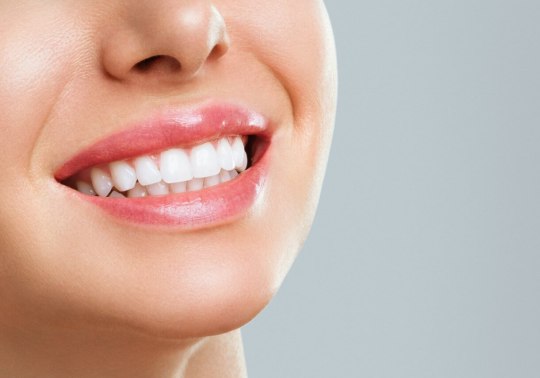
Tooth gems are a popular way to add a personal touch to your smile with a hint of sparkle. These tiny gems, usually crafted from Swarovski crystals, gold, or diamonds, are applied to the surface of your teeth, offering a semi-permanent way to accessorize your look. But how long do tooth gems actually last? This guide will walk you through the longevity of tooth gems, factors that impact their durability, and tips for extending their wear.
Understanding the Longevity of Tooth Gems
Generally, tooth gems can last anywhere from 6 months to a few years, depending on the type of adhesive used, personal dental care habits, and the gem material. Most professional tooth gems are attached with a high-quality dental adhesive, similar to the one used for braces, which ensures durability and safety. Here’s what you can expect in terms of longevity:
Temporary Tooth Gems: These are usually attached with lighter adhesives and last around 6 months to a year.
Semi-Permanent Tooth Gems: Using high-strength adhesives, these gems can last up to 2 years or longer with proper care.
When placed by a professional, tooth gems have a higher chance of staying intact for a longer period. The placement, quality of adhesive, and gem size are all factors that influence how long they stay attached.
Factors That Affect Tooth Gem Durability
Several factors can impact how long your tooth gem will last:
1. Application Quality: Tooth gems applied by a licensed dental professional are likely to last longer than DIY options. Professionals use high-quality adhesive and tools to ensure the gem is securely placed.
2. Tooth Surface Condition: The smoother and cleaner the tooth surface, the better the gem will adhere. Any pre-existing dental work, like fillings or crowns, might affect how well the gem sticks.
3. Eating Habits: Biting into hard foods or ice, or grinding teeth, can put stress on the gem, potentially dislodging it. Limiting hard foods can extend the gem’s longevity.
4. Oral Hygiene Routine: Brushing, flossing, and regular check-ups are essential for keeping the area around the tooth gem clean. However, brushing too vigorously over the gem can weaken the adhesive, shortening its lifespan.
5. Gem Size and Weight: Larger, heavier gems may be more prone to falling off compared to smaller, lighter gems, as they exert more pressure on the adhesive.
How to Extend the Life of Your Tooth Gem
To get the most out of your tooth gem, follow these tips:
Visit a Professional: Get your tooth gem applied by a certified professional who specializes in cosmetic dentistry. They can ensure that the gem is securely attached, reducing the risk of it falling off.
Use Gentle Brushing Techniques: When brushing, be gentle around the tooth gem area. Soft-bristled toothbrushes are recommended to prevent damaging the adhesive.
Avoid Hard Foods: Crunchy or sticky foods can loosen the gem or cause it to fall off. Try to avoid biting directly into hard foods to keep the gem in place.
Avoid Chewing Gum: Gum can stick to the gem and weaken its hold. If you choose to chew gum, avoid chewing on the side with the gem.
Regular Dental Check-Ups: Inform your dentist about your tooth gem during regular check-ups so they can check its condition and ensure it doesn’t interfere with oral health.
Are Tooth Gems Safe?
Tooth gems are generally safe when applied by a professional, as they do not require any drilling or damage to the tooth’s surface. Professionals use dental-safe adhesives that are strong yet non-damaging to the enamel. However, proper care is important to prevent any potential buildup of plaque around the gem, which could lead to decay.
Additionally, if you’re planning to remove the tooth gem, it’s best to visit a professional to avoid any damage to the enamel. A dentist can safely remove the gem and any adhesive residue, leaving the tooth surface smooth and intact.
When to Replace a Tooth Gem
The adhesive bond of a tooth gem naturally weakens over time, so even with great care, it will eventually need replacing if you wish to maintain the look. Temporary gems generally last around 6 months, while semi-permanent options can last 1-2 years. Signs it may be time to replace your tooth gem include:
Looseness: If the gem feels wobbly, it’s best to remove it before it falls off.
Discoloration: Gems may become dull over time; replacing them can refresh your look.
Wear on Adhesive: If you notice any visible adhesive wear, a professional can assess whether a replacement is needed.
Tooth gems are a unique and stylish addition that can last anywhere from a few months to several years, depending on how well they are applied and cared for. Following good oral hygiene practices, avoiding hard foods, and visiting a professional for application and removal are key steps to ensuring your gem lasts as long as possible. With proper care, your tooth gem can remain a sparkling enhancement to your smile, adding a touch of personality and style to your everyday look.
0 notes
Text
How Long Do Tooth Gems Last?
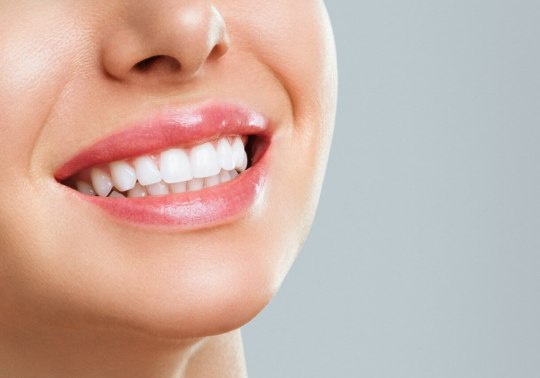
Tooth gems are a popular way to add a personal touch to your smile with a hint of sparkle. These tiny gems, usually crafted from Swarovski crystals, gold, or diamonds, are applied to the surface of your teeth, offering a semi-permanent way to accessorize your look. But how long do tooth gems actually last? This guide will walk you through the longevity of tooth gems, factors that impact their durability, and tips for extending their wear.
Understanding the Longevity of Tooth Gems
Generally, tooth gems can last anywhere from 6 months to a few years, depending on the type of adhesive used, personal dental care habits, and the gem material. Most professional tooth gems are attached with a high-quality dental adhesive, similar to the one used for braces, which ensures durability and safety. Here’s what you can expect in terms of longevity:
Temporary Tooth Gems: These are usually attached with lighter adhesives and last around 6 months to a year.
Semi-Permanent Tooth Gems: Using high-strength adhesives, these gems can last up to 2 years or longer with proper care.
When placed by a professional, tooth gems have a higher chance of staying intact for a longer period. The placement, quality of adhesive, and gem size are all factors that influence how long they stay attached.
Factors That Affect Tooth Gem Durability
Several factors can impact how long your tooth gem will last:
1. Application Quality: Tooth gems applied by a licensed dental professional are likely to last longer than DIY options. Professionals use high-quality adhesive and tools to ensure the gem is securely placed.
2. Tooth Surface Condition: The smoother and cleaner the tooth surface, the better the gem will adhere. Any pre-existing dental work, like fillings or crowns, might affect how well the gem sticks.
3. Eating Habits: Biting into hard foods or ice, or grinding teeth, can put stress on the gem, potentially dislodging it. Limiting hard foods can extend the gem’s longevity.
4. Oral Hygiene Routine: Brushing, flossing, and regular check-ups are essential for keeping the area around the tooth gem clean. However, brushing too vigorously over the gem can weaken the adhesive, shortening its lifespan.
5. Gem Size and Weight: Larger, heavier gems may be more prone to falling off compared to smaller, lighter gems, as they exert more pressure on the adhesive.
How to Extend the Life of Your Tooth Gem
To get the most out of your tooth gem, follow these tips:
Visit a Professional: Get your tooth gem applied by a certified professional who specializes in cosmetic dentistry. They can ensure that the gem is securely attached, reducing the risk of it falling off.
Use Gentle Brushing Techniques: When brushing, be gentle around the tooth gem area. Soft-bristled toothbrushes are recommended to prevent damaging the adhesive.
Avoid Hard Foods: Crunchy or sticky foods can loosen the gem or cause it to fall off. Try to avoid biting directly into hard foods to keep the gem in place.
Avoid Chewing Gum: Gum can stick to the gem and weaken its hold. If you choose to chew gum, avoid chewing on the side with the gem.
Regular Dental Check-Ups: Inform your dentist about your tooth gem during regular check-ups so they can check its condition and ensure it doesn’t interfere with oral health.
Are Tooth Gems Safe?
Tooth gems are generally safe when applied by a professional, as they do not require any drilling or damage to the tooth’s surface. Professionals use dental-safe adhesives that are strong yet non-damaging to the enamel. However, proper care is important to prevent any potential buildup of plaque around the gem, which could lead to decay.
Additionally, if you’re planning to remove the tooth gem, it’s best to visit a professional to avoid any damage to the enamel. A dentist can safely remove the gem and any adhesive residue, leaving the tooth surface smooth and intact.
When to Replace a Tooth Gem
The adhesive bond of a tooth gem naturally weakens over time, so even with great care, it will eventually need replacing if you wish to maintain the look. Temporary gems generally last around 6 months, while semi-permanent options can last 1-2 years. Signs it may be time to replace your tooth gem include:
Looseness: If the gem feels wobbly, it’s best to remove it before it falls off.
Discoloration: Gems may become dull over time; replacing them can refresh your look.
Wear on Adhesive: If you notice any visible adhesive wear, a professional can assess whether a replacement is needed.
Tooth gems are a unique and stylish addition that can last anywhere from a few months to several years, depending on how well they are applied and cared for. Following good oral hygiene practices, avoiding hard foods, and visiting a professional for application and removal are key steps to ensuring your gem lasts as long as possible. With proper care, your tooth gem can remain a sparkling enhancement to your smile, adding a touch of personality and style to your everyday look.
0 notes
Text
How Long Do Tooth Gems Last?

Tooth gems are a popular way to add a personal touch to your smile with a hint of sparkle. These tiny gems, usually crafted from Swarovski crystals, gold, or diamonds, are applied to the surface of your teeth, offering a semi-permanent way to accessorize your look. But how long do tooth gems actually last? This guide will walk you through the longevity of tooth gems, factors that impact their durability, and tips for extending their wear.
Understanding the Longevity of Tooth Gems
Generally, tooth gems can last anywhere from 6 months to a few years, depending on the type of adhesive used, personal dental care habits, and the gem material. Most professional tooth gems are attached with a high-quality dental adhesive, similar to the one used for braces, which ensures durability and safety. Here’s what you can expect in terms of longevity:
Temporary Tooth Gems: These are usually attached with lighter adhesives and last around 6 months to a year.
Semi-Permanent Tooth Gems: Using high-strength adhesives, these gems can last up to 2 years or longer with proper care.
When placed by a professional, tooth gems have a higher chance of staying intact for a longer period. The placement, quality of adhesive, and gem size are all factors that influence how long they stay attached.
Factors That Affect Tooth Gem Durability
Several factors can impact how long your tooth gem will last:
1. Application Quality: Tooth gems applied by a licensed dental professional are likely to last longer than DIY options. Professionals use high-quality adhesive and tools to ensure the gem is securely placed.
2. Tooth Surface Condition: The smoother and cleaner the tooth surface, the better the gem will adhere. Any pre-existing dental work, like fillings or crowns, might affect how well the gem sticks.
3. Eating Habits: Biting into hard foods or ice, or grinding teeth, can put stress on the gem, potentially dislodging it. Limiting hard foods can extend the gem’s longevity.
4. Oral Hygiene Routine: Brushing, flossing, and regular check-ups are essential for keeping the area around the tooth gem clean. However, brushing too vigorously over the gem can weaken the adhesive, shortening its lifespan.
5. Gem Size and Weight: Larger, heavier gems may be more prone to falling off compared to smaller, lighter gems, as they exert more pressure on the adhesive.
How to Extend the Life of Your Tooth Gem
To get the most out of your tooth gem, follow these tips:
Visit a Professional: Get your tooth gem applied by a certified professional who specializes in cosmetic dentistry. They can ensure that the gem is securely attached, reducing the risk of it falling off.
Use Gentle Brushing Techniques: When brushing, be gentle around the tooth gem area. Soft-bristled toothbrushes are recommended to prevent damaging the adhesive.
Avoid Hard Foods: Crunchy or sticky foods can loosen the gem or cause it to fall off. Try to avoid biting directly into hard foods to keep the gem in place.
Avoid Chewing Gum: Gum can stick to the gem and weaken its hold. If you choose to chew gum, avoid chewing on the side with the gem.
Regular Dental Check-Ups: Inform your dentist about your tooth gem during regular check-ups so they can check its condition and ensure it doesn’t interfere with oral health.
Are Tooth Gems Safe?
Tooth gems are generally safe when applied by a professional, as they do not require any drilling or damage to the tooth’s surface. Professionals use dental-safe adhesives that are strong yet non-damaging to the enamel. However, proper care is important to prevent any potential buildup of plaque around the gem, which could lead to decay.
Additionally, if you’re planning to remove the tooth gem, it’s best to visit a professional to avoid any damage to the enamel. A dentist can safely remove the gem and any adhesive residue, leaving the tooth surface smooth and intact.
When to Replace a Tooth Gem
The adhesive bond of a tooth gem naturally weakens over time, so even with great care, it will eventually need replacing if you wish to maintain the look. Temporary gems generally last around 6 months, while semi-permanent options can last 1-2 years. Signs it may be time to replace your tooth gem include:
Looseness: If the gem feels wobbly, it’s best to remove it before it falls off.
Discoloration: Gems may become dull over time; replacing them can refresh your look.
Wear on Adhesive: If you notice any visible adhesive wear, a professional can assess whether a replacement is needed.
Tooth gems are a unique and stylish addition that can last anywhere from a few months to several years, depending on how well they are applied and cared for. Following good oral hygiene practices, avoiding hard foods, and visiting a professional for application and removal are key steps to ensuring your gem lasts as long as possible. With proper care, your tooth gem can remain a sparkling enhancement to your smile, adding a touch of personality and style to your everyday look.
0 notes
Text
How Long Do Tooth Gems Last?
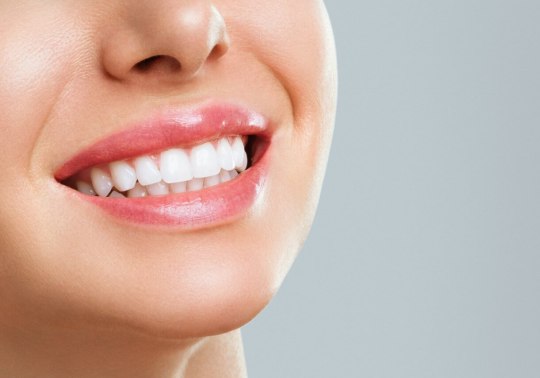
Tooth gems are a popular way to add a personal touch to your smile with a hint of sparkle. These tiny gems, usually crafted from Swarovski crystals, gold, or diamonds, are applied to the surface of your teeth, offering a semi-permanent way to accessorize your look. But how long do tooth gems actually last? This guide will walk you through the longevity of tooth gems, factors that impact their durability, and tips for extending their wear.
Understanding the Longevity of Tooth Gems
Generally, tooth gems can last anywhere from 6 months to a few years, depending on the type of adhesive used, personal dental care habits, and the gem material. Most professional tooth gems are attached with a high-quality dental adhesive, similar to the one used for braces, which ensures durability and safety. Here’s what you can expect in terms of longevity:
Temporary Tooth Gems: These are usually attached with lighter adhesives and last around 6 months to a year.
Semi-Permanent Tooth Gems: Using high-strength adhesives, these gems can last up to 2 years or longer with proper care.
When placed by a professional, tooth gems have a higher chance of staying intact for a longer period. The placement, quality of adhesive, and gem size are all factors that influence how long they stay attached.
Factors That Affect Tooth Gem Durability
Several factors can impact how long your tooth gem will last:
1. Application Quality: Tooth gems applied by a licensed dental professional are likely to last longer than DIY options. Professionals use high-quality adhesive and tools to ensure the gem is securely placed.
2. Tooth Surface Condition: The smoother and cleaner the tooth surface, the better the gem will adhere. Any pre-existing dental work, like fillings or crowns, might affect how well the gem sticks.
3. Eating Habits: Biting into hard foods or ice, or grinding teeth, can put stress on the gem, potentially dislodging it. Limiting hard foods can extend the gem’s longevity.
4. Oral Hygiene Routine: Brushing, flossing, and regular check-ups are essential for keeping the area around the tooth gem clean. However, brushing too vigorously over the gem can weaken the adhesive, shortening its lifespan.
5. Gem Size and Weight: Larger, heavier gems may be more prone to falling off compared to smaller, lighter gems, as they exert more pressure on the adhesive.
How to Extend the Life of Your Tooth Gem
To get the most out of your tooth gem, follow these tips:
Visit a Professional: Get your tooth gem applied by a certified professional who specializes in cosmetic dentistry. They can ensure that the gem is securely attached, reducing the risk of it falling off.
Use Gentle Brushing Techniques: When brushing, be gentle around the tooth gem area. Soft-bristled toothbrushes are recommended to prevent damaging the adhesive.
Avoid Hard Foods: Crunchy or sticky foods can loosen the gem or cause it to fall off. Try to avoid biting directly into hard foods to keep the gem in place.
Avoid Chewing Gum: Gum can stick to the gem and weaken its hold. If you choose to chew gum, avoid chewing on the side with the gem.
Regular Dental Check-Ups: Inform your dentist about your tooth gem during regular check-ups so they can check its condition and ensure it doesn’t interfere with oral health.
Are Tooth Gems Safe?
Tooth gems are generally safe when applied by a professional, as they do not require any drilling or damage to the tooth’s surface. Professionals use dental-safe adhesives that are strong yet non-damaging to the enamel. However, proper care is important to prevent any potential buildup of plaque around the gem, which could lead to decay.
Additionally, if you’re planning to remove the tooth gem, it’s best to visit a professional to avoid any damage to the enamel. A dentist can safely remove the gem and any adhesive residue, leaving the tooth surface smooth and intact.
When to Replace a Tooth Gem
The adhesive bond of a tooth gem naturally weakens over time, so even with great care, it will eventually need replacing if you wish to maintain the look. Temporary gems generally last around 6 months, while semi-permanent options can last 1-2 years. Signs it may be time to replace your tooth gem include:
Looseness: If the gem feels wobbly, it’s best to remove it before it falls off.
Discoloration: Gems may become dull over time; replacing them can refresh your look.
Wear on Adhesive: If you notice any visible adhesive wear, a professional can assess whether a replacement is needed.
Tooth gems are a unique and stylish addition that can last anywhere from a few months to several years, depending on how well they are applied and cared for. Following good oral hygiene practices, avoiding hard foods, and visiting a professional for application and removal are key steps to ensuring your gem lasts as long as possible. With proper care, your tooth gem can remain a sparkling enhancement to your smile, adding a touch of personality and style to your everyday look.
0 notes
Text
How Long Do Tooth Gems Last?
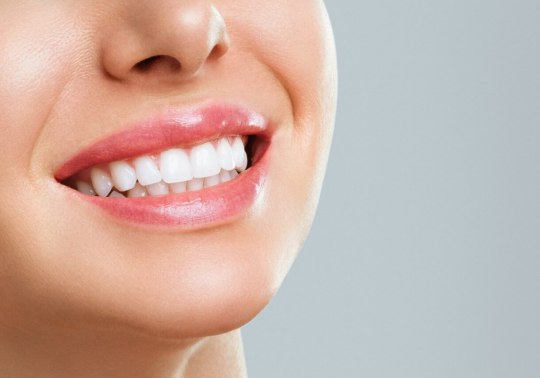
Tooth gems are a popular way to add a personal touch to your smile with a hint of sparkle. These tiny gems, usually crafted from Swarovski crystals, gold, or diamonds, are applied to the surface of your teeth, offering a semi-permanent way to accessorize your look. But how long do tooth gems actually last? This guide will walk you through the longevity of tooth gems, factors that impact their durability, and tips for extending their wear.
Understanding the Longevity of Tooth Gems
Generally, tooth gems can last anywhere from 6 months to a few years, depending on the type of adhesive used, personal dental care habits, and the gem material. Most professional tooth gems are attached with a high-quality dental adhesive, similar to the one used for braces, which ensures durability and safety. Here’s what you can expect in terms of longevity:
Temporary Tooth Gems: These are usually attached with lighter adhesives and last around 6 months to a year.
Semi-Permanent Tooth Gems: Using high-strength adhesives, these gems can last up to 2 years or longer with proper care.
When placed by a professional, tooth gems have a higher chance of staying intact for a longer period. The placement, quality of adhesive, and gem size are all factors that influence how long they stay attached.
Factors That Affect Tooth Gem Durability
Several factors can impact how long your tooth gem will last:
1. Application Quality: Tooth gems applied by a licensed dental professional are likely to last longer than DIY options. Professionals use high-quality adhesive and tools to ensure the gem is securely placed.
2. Tooth Surface Condition: The smoother and cleaner the tooth surface, the better the gem will adhere. Any pre-existing dental work, like fillings or crowns, might affect how well the gem sticks.
3. Eating Habits: Biting into hard foods or ice, or grinding teeth, can put stress on the gem, potentially dislodging it. Limiting hard foods can extend the gem’s longevity.
4. Oral Hygiene Routine: Brushing, flossing, and regular check-ups are essential for keeping the area around the tooth gem clean. However, brushing too vigorously over the gem can weaken the adhesive, shortening its lifespan.
5. Gem Size and Weight: Larger, heavier gems may be more prone to falling off compared to smaller, lighter gems, as they exert more pressure on the adhesive.
How to Extend the Life of Your Tooth Gem
To get the most out of your tooth gem, follow these tips:
Visit a Professional: Get your tooth gem applied by a certified professional who specializes in cosmetic dentistry. They can ensure that the gem is securely attached, reducing the risk of it falling off.
Use Gentle Brushing Techniques: When brushing, be gentle around the tooth gem area. Soft-bristled toothbrushes are recommended to prevent damaging the adhesive.
Avoid Hard Foods: Crunchy or sticky foods can loosen the gem or cause it to fall off. Try to avoid biting directly into hard foods to keep the gem in place.
Avoid Chewing Gum: Gum can stick to the gem and weaken its hold. If you choose to chew gum, avoid chewing on the side with the gem.
Regular Dental Check-Ups: Inform your dentist about your tooth gem during regular check-ups so they can check its condition and ensure it doesn’t interfere with oral health.
Are Tooth Gems Safe?
Tooth gems are generally safe when applied by a professional, as they do not require any drilling or damage to the tooth’s surface. Professionals use dental-safe adhesives that are strong yet non-damaging to the enamel. However, proper care is important to prevent any potential buildup of plaque around the gem, which could lead to decay.
Additionally, if you’re planning to remove the tooth gem, it’s best to visit a professional to avoid any damage to the enamel. A dentist can safely remove the gem and any adhesive residue, leaving the tooth surface smooth and intact.
When to Replace a Tooth Gem
The adhesive bond of a tooth gem naturally weakens over time, so even with great care, it will eventually need replacing if you wish to maintain the look. Temporary gems generally last around 6 months, while semi-permanent options can last 1-2 years. Signs it may be time to replace your tooth gem include:
Looseness: If the gem feels wobbly, it’s best to remove it before it falls off.
Discoloration: Gems may become dull over time; replacing them can refresh your look.
Wear on Adhesive: If you notice any visible adhesive wear, a professional can assess whether a replacement is needed.
Tooth gems are a unique and stylish addition that can last anywhere from a few months to several years, depending on how well they are applied and cared for. Following good oral hygiene practices, avoiding hard foods, and visiting a professional for application and removal are key steps to ensuring your gem lasts as long as possible. With proper care, your tooth gem can remain a sparkling enhancement to your smile, adding a touch of personality and style to your everyday look.
0 notes
Text
How Long Do Tooth Gems Last?
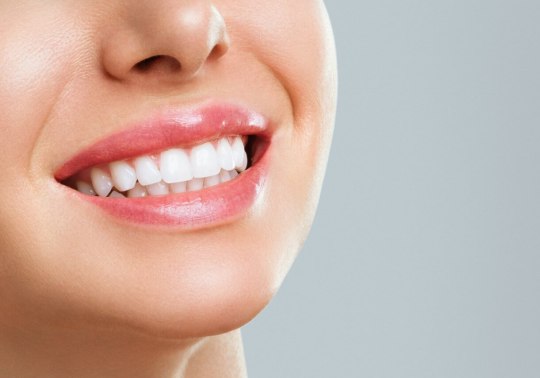
Tooth gems are a popular way to add a personal touch to your smile with a hint of sparkle. These tiny gems, usually crafted from Swarovski crystals, gold, or diamonds, are applied to the surface of your teeth, offering a semi-permanent way to accessorize your look. But how long do tooth gems actually last? This guide will walk you through the longevity of tooth gems, factors that impact their durability, and tips for extending their wear.
Understanding the Longevity of Tooth Gems
Generally, tooth gems can last anywhere from 6 months to a few years, depending on the type of adhesive used, personal dental care habits, and the gem material. Most professional tooth gems are attached with a high-quality dental adhesive, similar to the one used for braces, which ensures durability and safety. Here’s what you can expect in terms of longevity:
Temporary Tooth Gems: These are usually attached with lighter adhesives and last around 6 months to a year.
Semi-Permanent Tooth Gems: Using high-strength adhesives, these gems can last up to 2 years or longer with proper care.
When placed by a professional, tooth gems have a higher chance of staying intact for a longer period. The placement, quality of adhesive, and gem size are all factors that influence how long they stay attached.
Factors That Affect Tooth Gem Durability
Several factors can impact how long your tooth gem will last:
1. Application Quality: Tooth gems applied by a licensed dental professional are likely to last longer than DIY options. Professionals use high-quality adhesive and tools to ensure the gem is securely placed.
2. Tooth Surface Condition: The smoother and cleaner the tooth surface, the better the gem will adhere. Any pre-existing dental work, like fillings or crowns, might affect how well the gem sticks.
3. Eating Habits: Biting into hard foods or ice, or grinding teeth, can put stress on the gem, potentially dislodging it. Limiting hard foods can extend the gem’s longevity.
4. Oral Hygiene Routine: Brushing, flossing, and regular check-ups are essential for keeping the area around the tooth gem clean. However, brushing too vigorously over the gem can weaken the adhesive, shortening its lifespan.
5. Gem Size and Weight: Larger, heavier gems may be more prone to falling off compared to smaller, lighter gems, as they exert more pressure on the adhesive.
How to Extend the Life of Your Tooth Gem
To get the most out of your tooth gem, follow these tips:
Visit a Professional: Get your tooth gem applied by a certified professional who specializes in cosmetic dentistry. They can ensure that the gem is securely attached, reducing the risk of it falling off.
Use Gentle Brushing Techniques: When brushing, be gentle around the tooth gem area. Soft-bristled toothbrushes are recommended to prevent damaging the adhesive.
Avoid Hard Foods: Crunchy or sticky foods can loosen the gem or cause it to fall off. Try to avoid biting directly into hard foods to keep the gem in place.
Avoid Chewing Gum: Gum can stick to the gem and weaken its hold. If you choose to chew gum, avoid chewing on the side with the gem.
Regular Dental Check-Ups: Inform your dentist about your tooth gem during regular check-ups so they can check its condition and ensure it doesn’t interfere with oral health.
Are Tooth Gems Safe?
Tooth gems are generally safe when applied by a professional, as they do not require any drilling or damage to the tooth’s surface. Professionals use dental-safe adhesives that are strong yet non-damaging to the enamel. However, proper care is important to prevent any potential buildup of plaque around the gem, which could lead to decay.
Additionally, if you’re planning to remove the tooth gem, it’s best to visit a professional to avoid any damage to the enamel. A dentist can safely remove the gem and any adhesive residue, leaving the tooth surface smooth and intact.
When to Replace a Tooth Gem
The adhesive bond of a tooth gem naturally weakens over time, so even with great care, it will eventually need replacing if you wish to maintain the look. Temporary gems generally last around 6 months, while semi-permanent options can last 1-2 years. Signs it may be time to replace your tooth gem include:
Looseness: If the gem feels wobbly, it’s best to remove it before it falls off.
Discoloration: Gems may become dull over time; replacing them can refresh your look.
Wear on Adhesive: If you notice any visible adhesive wear, a professional can assess whether a replacement is needed.
Tooth gems are a unique and stylish addition that can last anywhere from a few months to several years, depending on how well they are applied and cared for. Following good oral hygiene practices, avoiding hard foods, and visiting a professional for application and removal are key steps to ensuring your gem lasts as long as possible. With proper care, your tooth gem can remain a sparkling enhancement to your smile, adding a touch of personality and style to your everyday look.
0 notes
Text
How Long Do Tooth Gems Last?
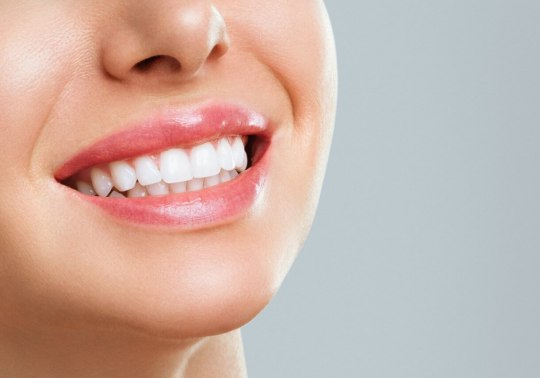
Tooth gems are a popular way to add a personal touch to your smile with a hint of sparkle. These tiny gems, usually crafted from Swarovski crystals, gold, or diamonds, are applied to the surface of your teeth, offering a semi-permanent way to accessorize your look. But how long do tooth gems actually last? This guide will walk you through the longevity of tooth gems, factors that impact their durability, and tips for extending their wear.
Understanding the Longevity of Tooth Gems
Generally, tooth gems can last anywhere from 6 months to a few years, depending on the type of adhesive used, personal dental care habits, and the gem material. Most professional tooth gems are attached with a high-quality dental adhesive, similar to the one used for braces, which ensures durability and safety. Here’s what you can expect in terms of longevity:
Temporary Tooth Gems: These are usually attached with lighter adhesives and last around 6 months to a year.
Semi-Permanent Tooth Gems: Using high-strength adhesives, these gems can last up to 2 years or longer with proper care.
When placed by a professional, tooth gems have a higher chance of staying intact for a longer period. The placement, quality of adhesive, and gem size are all factors that influence how long they stay attached.
Factors That Affect Tooth Gem Durability
Several factors can impact how long your tooth gem will last:
1. Application Quality: Tooth gems applied by a licensed dental professional are likely to last longer than DIY options. Professionals use high-quality adhesive and tools to ensure the gem is securely placed.
2. Tooth Surface Condition: The smoother and cleaner the tooth surface, the better the gem will adhere. Any pre-existing dental work, like fillings or crowns, might affect how well the gem sticks.
3. Eating Habits: Biting into hard foods or ice, or grinding teeth, can put stress on the gem, potentially dislodging it. Limiting hard foods can extend the gem’s longevity.
4. Oral Hygiene Routine: Brushing, flossing, and regular check-ups are essential for keeping the area around the tooth gem clean. However, brushing too vigorously over the gem can weaken the adhesive, shortening its lifespan.
5. Gem Size and Weight: Larger, heavier gems may be more prone to falling off compared to smaller, lighter gems, as they exert more pressure on the adhesive.
How to Extend the Life of Your Tooth Gem
To get the most out of your tooth gem, follow these tips:
Visit a Professional: Get your tooth gem applied by a certified professional who specializes in cosmetic dentistry. They can ensure that the gem is securely attached, reducing the risk of it falling off.
Use Gentle Brushing Techniques: When brushing, be gentle around the tooth gem area. Soft-bristled toothbrushes are recommended to prevent damaging the adhesive.
Avoid Hard Foods: Crunchy or sticky foods can loosen the gem or cause it to fall off. Try to avoid biting directly into hard foods to keep the gem in place.
Avoid Chewing Gum: Gum can stick to the gem and weaken its hold. If you choose to chew gum, avoid chewing on the side with the gem.
Regular Dental Check-Ups: Inform your dentist about your tooth gem during regular check-ups so they can check its condition and ensure it doesn’t interfere with oral health.
Are Tooth Gems Safe?
Tooth gems are generally safe when applied by a professional, as they do not require any drilling or damage to the tooth’s surface. Professionals use dental-safe adhesives that are strong yet non-damaging to the enamel. However, proper care is important to prevent any potential buildup of plaque around the gem, which could lead to decay.
Additionally, if you’re planning to remove the tooth gem, it’s best to visit a professional to avoid any damage to the enamel. A dentist can safely remove the gem and any adhesive residue, leaving the tooth surface smooth and intact.
When to Replace a Tooth Gem
The adhesive bond of a tooth gem naturally weakens over time, so even with great care, it will eventually need replacing if you wish to maintain the look. Temporary gems generally last around 6 months, while semi-permanent options can last 1-2 years. Signs it may be time to replace your tooth gem include:
Looseness: If the gem feels wobbly, it’s best to remove it before it falls off.
Discoloration: Gems may become dull over time; replacing them can refresh your look.
Wear on Adhesive: If you notice any visible adhesive wear, a professional can assess whether a replacement is needed.
Tooth gems are a unique and stylish addition that can last anywhere from a few months to several years, depending on how well they are applied and cared for. Following good oral hygiene practices, avoiding hard foods, and visiting a professional for application and removal are key steps to ensuring your gem lasts as long as possible. With proper care, your tooth gem can remain a sparkling enhancement to your smile, adding a touch of personality and style to your everyday look.
0 notes
Text
I hope if I’m ever meant to make it big, it’s while I still have my tooth gem cause that’s literally the coolest thing about me.
0 notes
Text
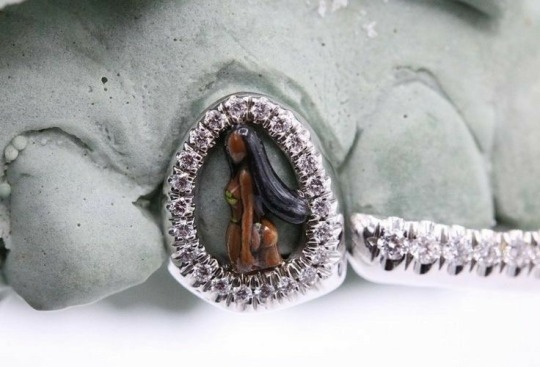
786 notes
·
View notes
Text

#drealdior#black tumblr#black girl moodboard#black girl fitspo#best friends#woc#besties#uk girl#black girls of tumblr#black beauty#black women#tooth gems#black woman appreciation#melanin#pretty#accessories#silver jewelry#grillz
1K notes
·
View notes
Text




—𝑷𝒊𝒏𝒕𝒆𝒓𝒆𝒔𝒕☁️
•
•
•
#girlblogging#this is a girlblog#black tumblr#black reader#it girl#black y/n#soft life#black women#influencer#black femininity#black femme#black fanfic writer#black beauty#black stories#black girl aesthetic#black girl#black girl moodboard#black girl beauty#acrylic nails#pedicured toes#lickable toes#tooth gems#soft pink#pink aesthetic#pink moodboard
120 notes
·
View notes
